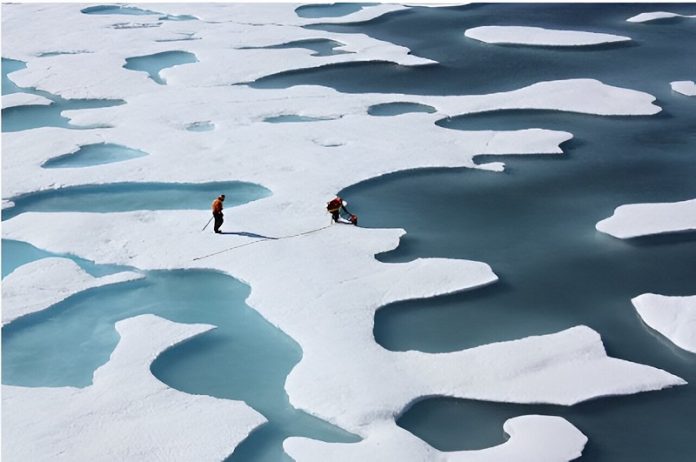
A new study led by scientists from the University of Michigan has found that the cooling power of sea ice is decreasing much faster than its physical area.
This change has resulted in the Arctic losing around 25% of its cooling power since 1980, and the world overall losing up to 15%.
The research was published in Geophysical Research Letters.
The team used satellite data from 1980 to 2023 to measure cloud cover and the solar radiation reflected by sea ice.
They discovered that the percentage drop in sea ice’s cooling power is about twice as high as the percentage decrease in sea ice area in both the Arctic and Antarctic regions. This extra warming effect is on the higher end of what climate models have predicted.
“Typically, climate simulations take a century to show how melting sea ice impacts climate,” said Mark Flanner, a professor of climate and space sciences at the University of Michigan and the study’s lead author. “Now, we have enough satellite data to measure this feedback effect directly.”
Since 1980, the Arctic has experienced the largest and most consistent declines in sea ice cooling power. Initially, the Antarctic seemed more resistant to climate change, with stable sea ice cover from 2007 into the 2010s. In fact, the cooling power of Antarctic sea ice was even increasing during that period. However, this trend changed dramatically in 2016 when a massive ice shelf area larger than Texas melted, leading to a significant loss of sea ice cooling power in the Antarctic that has not recovered.
As sea ice thins and darkens due to warming temperatures and increased rainfall, it reflects less sunlight. This effect is most pronounced in the Arctic during its sunniest months. The study suggests this might also be happening in the Antarctic, contributing to the overall decline in sea ice cooling power.
“The changes to Antarctic sea ice since 2016 have increased the warming feedback from sea ice loss by 40%,” explained Alisher Duspayev, a doctoral student in physics and the study’s first author. “If we don’t consider this change in the Antarctic’s sea ice reflectivity, we might be underestimating the global energy absorption.”
The research team plans to share their updated estimates on sea ice’s cooling power with the climate science community through a website that will be updated with new satellite data.
“Climate change adaptation plans need to include these new numbers,” said Aku Riihelä, a research professor at the Finnish Meteorological Institute and co-author of the study. “Understanding how quickly and widely the loss of sea ice cooling power affects the global climate system is crucial for making informed decisions.”



